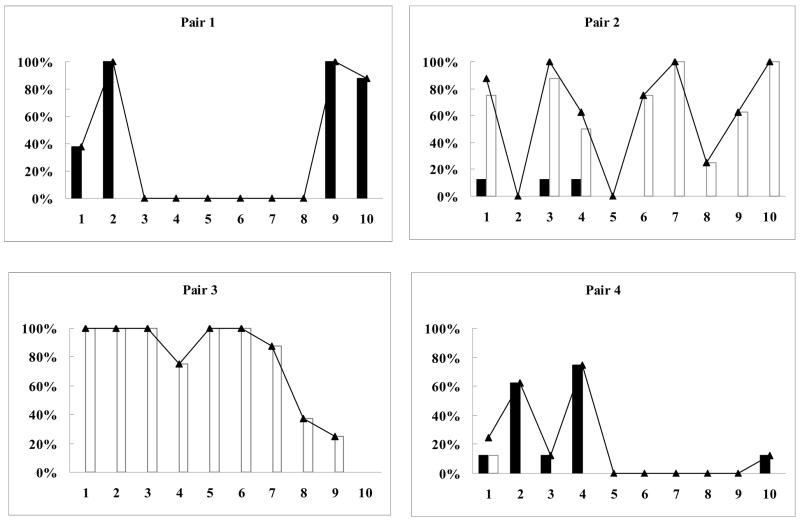Figure 6.
Percentage of trials solved and percentage of rewards received in experiment 4, Delivered Reward. X-axis represents session. The line indicates the percentage of trials solved. Black bars indicate the percentage of rewards received by the female (percentage calculated out of total number of rewards possible each session regardless of whether the trial was solved), white bars represent the percentage of rewards received by the male. In all pairs one individual received more rewards than their partner. Sessions in which both the male and the female received rewards indicate sessions in which the tamarins solved at least one trial on their non-preferred sides.
Cooperation among non-human animals has been the topic of much theoretical and empirical research. We previously demonstrated that cottontop tamarins, a species that exhibits cooperative care of the young, coordinated behaviors to solve a cooperative task for mutual rewards. The tamarins also understood the role of the partner in the task. Here we show that tamarins continued to cooperate for a single reward, regardless of whether the rewarded individual was experimentally alternated across days or randomized within a session. Furthermore, the tamarins continued to cooperate, although to a lesser extent, when one individual was repeatedly rewarded for ten consecutive days and the other received nothing. In all experiments, the tamarins cooperated to procure rewards for their social partners. We attribute the tamarins’ successful performance to their naturally cooperative social structure and the strong bond between partners.

